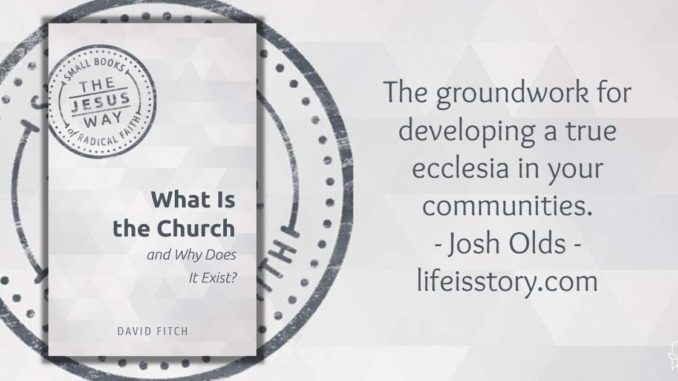
Series: The Jesus Way #10
Published by Herald Press on March 30, 2021
Genres: Non-Fiction, Theology
Buy on Amazon
Goodreads

What is the church? And why does it exist? These are essential questions for those who seek to follow Jesus in community.
David Fitch delves into the origins of the church, exploring the identity and calling of the body of Christ in scripture and church history. Learn about the Christian practices that shape the church and how our understandings of church might change in light of the life of the church through the centuries. At a time when the church in the US is losing credibility and cultural privilege, Fitch calls us to embrace historic Anabaptism as a model for thriving as God’s people in our own time and place.
The Jesus Way: Small Books of Radical Faith delve into big questions about God’s work in the world. These concise, practical books are deeply rooted in Anabaptist theology. Crafted by a diverse community of internationally renowned scholars, pastors, and practitioners, The Jesus Way series helps readers deepen their faith in Christ and enliven their witness.
As I continue on my faith journey, I find myself drawing ever closer to the description of “Anabaptist.” I grew up in a Christian Church/Church of Christ, went to college/seminary at a Baptist school, then took my first pastorate at a “Bapticostal” non-denominational church. I’ve never been too fond of denominational labels, as they’re usually used to “other” rather than bring together, but, through the influence of Shane Claiborne, Drew Hart, Ron Sider, Scot McKnight, and others, I’ve slowly drifted toward Anabaptist philosophy.
It’s only natural, then, that I sought out a primer of sorts for Anabaptism, and found The Jesus Way: Small Books of Radical Faith series to be a solid starting point. This volume, What is the Church? outlines, in brief, the ecclesiology of Anabaptist faith and the role and function of the church body. David Fitch breaks it down into six simple chapters that root the church as a practicing community of believers through whom God works.
This definition would revolutionize much of Christianity if we would accept it. The COVID-19 pandemic revealed to us, and the world, that many segments of Christianity were focused only on a once-a-week physical gathering. And while I don’t want to downplay the need for such a gathering, Fitch is careful to define church as a body rather than an experience. It’s not something that we go to or have done to is, it is something we are and work out ourselves.
In the concluding chapter, Fitch argues for three different types of gathering in church: the close circle (a committed small group of believers), the dotted circle (a larger community of believers), and the open circle (wherever the church takes the Gospel and Christ’s presence is revealed at work). Nowhere in that definition, or anywhere else in the book, does Fitch talk church polity or buildings, organizational structure or order of service. For Fitch, and for Anabaptism in general, church is much more informal and personal.
If you’ve been looking for a new way of doing church or if you’ve found yourself turned off by the way your local church body is being the church, or if you’re a church leader wanting to move your church to action, What is the Church? is the groundwork for developing a true ecclesia in your communities.



